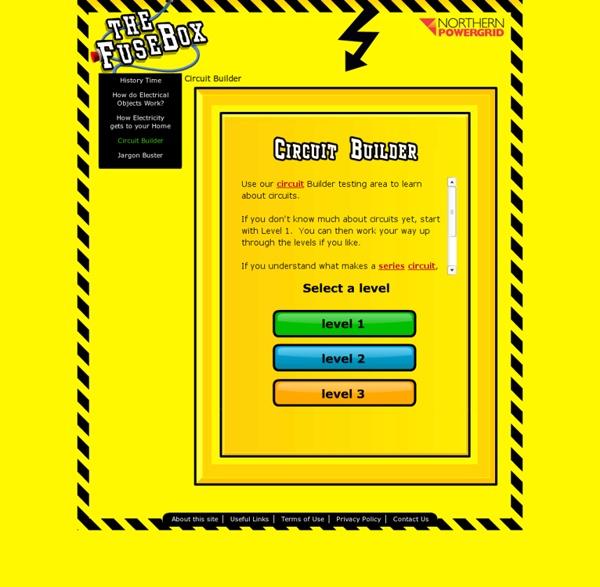



Math, Physics, and Engineering Applets Oscillations and Waves Acoustics Signal Processing Electricity and Magnetism: Statics Electrodynamics Quantum Mechanics Linear Algebra Vector Calculus Thermodynamics Mechanics Miscellaneous Licensing info. Links to other educational sites with math/physics-related information or java applets useful for teaching: And when you get tired of learning, here is some fun stuff: Pong Simulation Circuit-level simulation of original 1972 Pong. Make a Simple Circuit For this project, you'll build a switch that allows you to control the flow of electricity. This switch can then be used in the other experiments. Materials You Will Need: Energizer® Power Pack Spring-tension wood or plastic clothespin Number 22 insulated copper bell wire (three 10" pieces with 1" of insulation stripped off both ends of all wires) Small blocks of wood One drywall nail, thumbtacks, paper clip 3-volt flashlight bulb Please Read Carefully! All experiments use safe, low-voltage battery power. Carefully follow wiring instructions for each experiment - improper wiring can result in battery leakage and/or rupture. How to Build a Switch: Wind a bare wire end around a thumbtack. Alternate: Insulated knife blade switches are available commercially, and are used to illustrate the experiments throughout this site. How to Build a Bulb Holder: Nail a clothespin to a wood block. How to Complete the Simple Circuit: When the circuit switch is open, the current does not flow to the bulb.
Making Boys Men: Simple Circuits for Kids Recently the boys have been showing an interest in how things work so I thought we'd test out making some simple circuits with them and whilst we were at it learn a bit about what materials conduct electricity. This is what we did.... I bought some simple electronics parts from our local Maplin store. We put 2 AA batteries in a battery box with a snap connector (this connects to the batteries and has two wires coming out of it), We then connected a wire to each side of the light bulb holder and yey, it lit up! These aren't the exact products we used, but hopefully they give you an idea of what we created if it's not clear from the pictures. Once we'd tested out the light bulb we added an extra wire so that we could test how conductive different materials are. If I'd had been a bit better prepared this would have been a great opportunity to get the boys to write down what materials they thought would or wouldn't conduct electricity. First, up we tested some Lego, which didn't work.